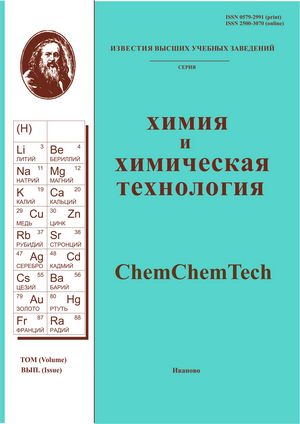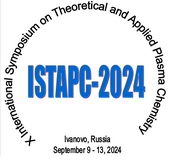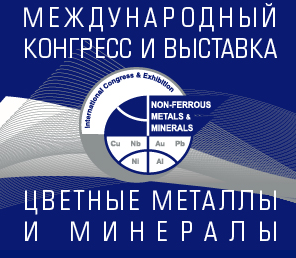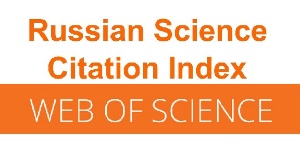ВЫБОРОЧНЫЕ СРЕДСТВА СИСТЕМНОГО АНАЛИЗА ДЛЯ ИДЕНТИФИКАЦИИ СВОЙСТВ АКТИВНЫХ ИНГРЕДИЕНТОВ В СОСТАВЕ ПОЛИМЕРНЫХ КОМПОЗИЦИЙ
Аннотация
Проведен обзор работ, использующих квантово-химические и другие методы математического моделирования для идентификации и управления свойствами полимерных композиций. Рассмотрены некоторые неэмпирические методы, а также методы DFT и их роль в современных исследованиях. Выделены основные этапы оценки свойств полимерных композиций. Среди них анализ «структура-свойства», управление свойствами полимерных композиций как во время полимеризации, так и с помощью варьирования активных и пассивных добавок. Рассмотрены основные тенденции использования математического моделирования для решения подобных задач. Проведен анализ современных подходов, применяемых для исследования свойств, среди которых можно выделить нейронные сети и методы, требующие высокопроизводительных вычислений. Подробно описаны некоторые из моделей, например, фундаментальные уравнения терминальной модели и модели предпоследней единицы. Среди примеров также указаны: метод клеточных автоматов, математическая модель воздействия переменного электрического поля на композит, метод моментов для расчета средней молекулярной массы полимера, уравнения, описывающие процесс полимеризации для высокомолекулярных соединений. В данном обзоре также было проанализировано новое перспективное направление использования нанокомпозитов, участвующих в синтезе новых долговечных продуктов, обладающих улучшенными свойствами. Проведенная работа показала, что даже на одних и тех же этапах оценки свойств полимерных композиций используются совершенно разные как квантовохимические, так и другие математические методы. Рассмотренные в данной работе математические методы можно систематизировать в три группы: моделирование зависимости «структура - свойство», управление свойствами при синтезе полимеров, управление свойствами композиционных материалов путем изменения компонентов этой композиции.
Литература
Mavroudakis E., Cuccato D., Moscatelli D. On the Use of Quantum Chemistry for the Determination of Propagation, Copolymerization, and Secondary Reaction Kinetics in Free Radical Polymerization. Polymers. 2015. N 7. P. 1789-1819. DOI: 10.3390/polym7091483
Tasli P. T., Soganci T., Kart S. O., Kart H. H., Ak M. Quantum mechanical calculations of different monomeric structures with the same electroactive group to clarify the relationship between structure and ultimate optical and electrochemical properties of their conjugated polymers. J. Phys. Chem. Solids. 2021. N 149. DOI: 10.1016/j.jpcs.2020.109720.
Irigoyen M., Matxain J. M., Ruipérez F. Effect of Molecular Structure in the Chain Mobility of Dichalcogenide-Based Polymers with Self-Healing Capacity. Polymers. 2019. N 11. DOI: 10.3390/polym11121960.
Akgul Y., Ahlatci H., Turan M. E., Simsir H., Erden M. A., Sun Y., Kilic A. Mechanical, tribological, and biological properties of carbon fiber/hydroxyapatite reinforced hybrid composites. Polym. Composit. 2020. N 41. P. 2426-2432. DOI: 10.1002/pc.25546.
Zhang Y., Sun L., Li L., Xiao H., Wang Y. An efficient numerical method to analyze low‐velocity impact re-sponse of carbon fiber reinforced thermoplastic laminates. Polym. Composit. 2020. N 41. P. 2673-2686. DOI: 10.1002/pc.25566.
Brząkalski D., Przekop R. E., Dobrosielska M., Sztorch B., Marciniak P., Marciniec B. Highly bulky spherosili-cates as functional additives for polyethylene processing—Influence on mechanical and thermal properties. Polym. Composit. 2020. N 41. P. 3389-3402. DOI: 10.1002/pc.25628.
Shankar U., Bhandari S., Khastgir D. Carbon Black‐Filled Nitrile Rubber Composite as a Flexible Electrode for Electrochemical Synthesis of Supercapacitive Polyaniline. Polym. Composit. 2018. N 40. P. E1537-E1547. DOI: 10.1002/pc.25069.
Hu X., Qian W., Li X., Fei G., Luo G., Wang Z., Xia H. A novel method to prepare homogeneous biocompatible graphene‐based PDMS composites with enhanced mechanical, thermal and antibacterial properties. Polym. Composit. 2019. N 40. P. E1397-E1406. DOI: 10.1002/pc.25019.
Ferreira W.H., Dahmouche K., Andrade C.T. Tuning the mechanical and electrical conductivity properties of graphene‐based thermoplastic starch/poly(lactic acid) hybrids. Polym. Composit. 2019. N 40. P. E1131-E1142. DOI: 10.1002/pc.24902.
Abbasi H., Antunes M., Velasco J.I. Enhancing the elec-trical conductivity of polyetherimide‐based foams by simultaneously increasing the porosity and graphene nanoplatelets dispersion. Polym. Composit. 2019. N 40. P. E1416-E1425. DOI: 10.1002/pc.25029.
Bouknaitir I., Panniello A., Teixeira S. S., Kreit L., Corricelli M., Striccoli M., Costa L.C., Achour M.E. Optical and dielectric properties of PMMA (poly(methyl methacrylate))/carbon dots composites. Polym. Composit. 2019. N 40. P. E1312-E1319. DOI: 10.1002/pc.24977.
Wang L., Fu W., Peng W. Enhanced strength and toughness of polyurethane rubber by introducing hydrogen bond sacrificial units at rubber‐graphene interfaces. Polym. Composit. 2020. N 41. P. 1242-1254. DOI: 10.1002/pc.25450.
Jiang J., Mei C., Pan M., Cao J. Improved mechanical properties and hydrophobicity on wood flour reinforced composites: Incorporation of silica/montmorillonite nanoparticles in polymers. Polym. Composit. 2020. N 41. P. 1090-1099. DOI: 10.1002/pc.25440.
Panwar V., Pal K. Influence of addition of selective metallic species on mechanical properties of gra-phene/acrylonitrile‐butadiene‐styrene composites. Polym. Composit. 2020. N 41. P. 1636-1648. DOI: 10.1002/pc.25485.
Chan J.X., Wong J.F., Hassan A., Mohamad Z., Othman N. Mechanical properties of wollastonite reinforced thermoplastic composites: A review. Polym. Composit. 2020. N 41. P. 395-429. DOI: 10.1002/pc.25403.
Sun Y., Han X., Su W., Gong J., Xi Z., Zhang J., Wang Q., Xie H. Mechanical and bonding properties of pristine montmorillonite reinforced epoxy asphalt bond coats. Polym. Composit. 2020. N 41. P. 3034-3042. DOI: 10.1002/pc.25595.
Yang B., Wang S., Li Y., Liming T., Enqiu H., Song S. Molecular dynamics simulations of mechanical properties of swollen nitrile rubber composites by incorporating car-bon nanotubes. Polym. Composit. 2020. N 41. P. 3160-3169. DOI: 10.1002/pc.25607.
Aminova G.A., Manuiyko G.V., Bronskaya V.V., Ignashina T.V., D'yakonov G.S., Bashkirov D.V. Monitoring and control of characteristics of butadiene rubber based on molecular weight distribution. Teor. Osnovy Khim. Tekhnol. 2009. V. 43. N 2. P. 218-224 (in Russian). DOI: 10.1134/S0040579509020110.
Shabalina S.G., Danilin V.N. Prediction of the properties of polymer-containing heat storage materials. Izv. VolgG-TU. 2009. V. 2. N 50. P. 108-112 (in Russian).
Starygina S.D., Yakupov T.N. Mathematical modeling of the rheological properties of polymers. Vestn. Kazan. Tekhnol. un-ta. 2010. N 10. P. 244-248 (in Russian).
Burya A.I., Kuznetsova O.Y., Kolesnikov V.I., Myas-nikova N.A., Lemeshko A.P. Investigation of the ther-mophysical properties of composites based on phenylone and a hybrid filler. Vestn. Rostov. Gos. Un-ta Putey Soob-shch. 2011. V. 4. N 44. P. 21-26 (in Russian).
Dimitrienko Yu.I., Sokolov A.P., Markevich M.N. Mathematical modeling of dielectric properties of poly-mer-ceramic composite materials by the method of asymptotic averaging. Mashinostr. Komp. Tekhnol. 2013. N 10. P. 97-107 (in Russian). DOI: 10.7463/1013.0623343.
Ivanov S.I., Matasov A.V., Men'shutina N.V. Modeling the deformation process of polymer nanocomposites us-ing parallel computing based on cellular automata. Teor. Osnovy Khim. Tekhnol. 2017. V. 51. N 3. P. 323–329 (in Russian). DOI: 10.1134/S0040579517030071.
Grigor'ev I.V. Numerical study of the butadiene polymerization process by methods of mathematical modeling. Sb. tr. Konf. “Differencial'nye Uravneniya I Smezhnye Problemy”. 2018. P. 211-215 (in Russian).
Makarov A.G., Maksimov V.V., Konovalov A.S., Ko-zlov A.A., Vagner V.I., Vasil'eva E.K. Komp'yuternoe modelirovanie i kachestvennyj analiz deformacionno-relaksacionnyh svojstv polimernyh materialov dlya pa-rashyutostroeniya. Tekhnol. Tekstil. Prom-ti. 2019. V. 5. N 383. P. 248-253 (in Russian).
Doagou‐Rad S., Islam A., Merca T.D. An application‐oriented roadmap to select polymeric nanocomposites for advanced applications: A review. Polym. Composit. 2020. V. 41. N 4. P. 1153-1189. DOI: 10.1002/pc.25461.
Morita A., Matsuba G., Fujimoto M. Evaluation of hydrophilic cellulose nanofiber dispersions in a hydropho-bic isotactic polypropylene composite. Appl. Polym. 2021. V. 138. N 8. DOI: 10.1002/app.49896.
Kim Y-K., Kim Y., Park J., Han S.W., Kim S.M. Purification effect of carbon nanotube fibers on their surface modification to develop a high-performance and multi-functional nanocomposite fiber. Carbon. 2021. N 173. P. 376-383. DOI: 10.1016/j.carbon.2020.11.026.
Rentería‐Baltiérrez F.Y., Reyes‐Melo M.E., Puente‐Córdova J.G., López‐Walle B. Correlation between the mechanical and dielectric responses in polymer films by a fractional calculus approach. Appl. Polym. 2021. V. 138. N 7. DOI: 10.1002/app.49853.
Mayo F.R., Lewis F.M. Copolymerization. I. A basis for comparing the behavior of monomers in copolymeriza-tion; the copolymerization of styrene and methyl methacrylate. J. Am. Chem. Soc. 1944. V. 66. P. 1594–1601. DOI: 10.1021/ja01237a052.
Dossi M., Liang K., Hutchinson R.A., Moscatelli D. Investigation of free-radical copolymerization propagation kinetics of vinyl acetate and methyl methacrylate. J. Phys. Chem. B. 2010. V. 114. P. 4213–4222. DOI: 10.1021/jp1007686.
Bakhvalov N.S., Panasenko G.P. Averaging processes in periodic media. Mathematical problems in the mechanics of composite materials. M.: Nauka. 1984. 352 p. (in Rus-sian).
Bensoussan A., Lions J.L., Papanicalaou G. Asymptotic analysis for periodic structures. Amsterdam; New York: North-Holland Pub. Co. 1978. 396 p.
Sanchez-Palencia E. Book chapters In: Homogenization techniques for composite media. Berlin, Heidelberg: Springer. 1987. P. 121-192. DOI: 10.1007/3-540-17616-0.
Halbershtam N.M., Baskin I.I., Palyulin V.A., Zefirov N.S. Neural networks as a method for finding dependen-cies structure - property of organic compounds. Usp. Khim. 2003. V. 72. N 7. P. 706-727 (in Russian). DOI: 10.1070/RC2003v072n07ABEH000754.
Mitchell B.E., Jurs P.C. Prediction of autoignition temperatures of organic compounds from molecular struc-ture. J. Chem. Inform. Comput. Sci. 1997. V. 37. N 3. P. 538-547. DOI: 10.1021/ci960175l.
Agrafiotis D.K. Stochastic algorithms for maximizing molecular diversity. J. Chem. Inform. Comput. Sci. 1997. V. 37. N 5. P. 841-851. DOI: 10.1021/ci9700337.
Gakh A.A. Prediction of complexation properties of crown ethers using computational neural networks. J. In-clus. Phenom. Molec. Recog. Chem. 1997. V. 27. N 3. P. 201-213.
Patnaik L. M., Rajan K. Target detection through image processing and resilient propagation algorithms. Neuro-computing. 2000. V. 35. N 1-4. P. 123-135. DOI: 10.1016/S0925-2312(00)00301-5.
Derbisher E.V., Derbisher V.E. Application of computational methods for the creation and selection of polymer compositions with specified properties. Matem. Fizika Komp. Model. 2019. V. 1. N 22. P. 35-53. DOI: 10.15688/mpcm.jvolsu.2019.1.4.
Ginzburg V.V. Polymer-grafted nanoparticles in polymer melts: Modeling using the combined SCFT–DFT ap-proach. Macromolecules. 2013. V. 46. N 24. P. 9798-9805. DOI: 10.1021/ma402210v.
Lopatin A.G., Vent D.P., Brykov B.A. Synthesis of a neuro-fuzzy model of radical polymerization process ki-netics. ChemChemTech [Izv. Vyssh. Uchebn. Zaved. Khim. Khim. Tekhnol.]. 2020. V. 63. N 7. P. 67-73. DOI: 10.6060/ivkkt.20206307.6081.



















